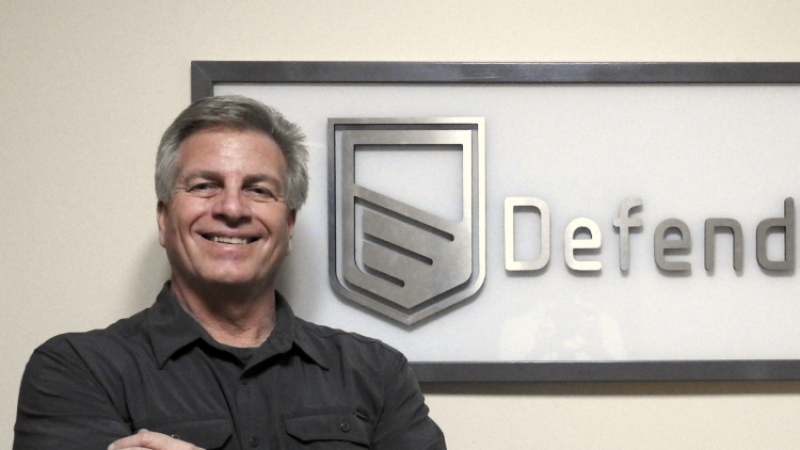Lewis Borsellino’s Trading Strategy

Lewis Borsellino is a name that resonates deeply within the trading world, particularly among those who remember the frenetic energy of the Chicago Mercantile Exchange (CME) trading pits.
With over four decades of experience, Borsellino is a veteran trader whose career spans the golden era of floor trading to the rise of electronic markets.
His journey from a law school aspirant to one of the most successful floor traders in history is a testament to resilience, adaptability, and an unyielding passion for the markets.
Borsellino’s Background
Borsellino’s path to trading was anything but conventional. After graduating from college with plans to attend law school, his life took a dramatic turn when his father was tragically murdered just two days after his graduation. This devastating event forced Borsellino to pivot, and he found himself driving a truck for his father’s small trucking company while preparing for the LSATs.
However, life had other plans. A chance encounter with a handball partner who worked on the floor of the CME introduced Borsellino to the world of trading. The energy and chaos of the trading floor captivated him, and he quickly abandoned his law school aspirations to pursue a career in the pits.
Starting as a runner, Borsellino worked his way up, eventually becoming a clerk and then a full-fledged trader. His early days were marked by struggle, but his persistence paid off when he landed a job as a clerk for Mory Kravitz, a renowned gold trader, which set the stage for his future success.
His Biggest Trade
Borsellino’s most famous trading moment came during the historic market crash of 1987. At just 28 years old, he made over $1.5 million in a single trade, a feat that remains one of the most legendary in trading history. The trade, executed in mere seconds, involved buying 300 S&P contracts during a period of extreme market volatility. The market moved so rapidly that Borsellino recalls feeling nauseous after the trade, knowing that it could have just as easily wiped him out.
This trade was not just a stroke of luck but a reflection of Borsellino’s ability to stay calm under pressure and read the market’s emotions. At his peak, Borsellino was responsible for 10% of the S&P trading volume, executing orders for major firms like Goldman Sachs, Solomon Brothers, and Merrill Lynch. His success during the crash solidified his reputation as one of the most skilled traders of his generation.
Borsellino’s Trading Strategy
Borsellino’s trading strategy was rooted in discipline and an acute understanding of market psychology. He often emphasized the importance of sticking to a plan, managing risk, and not letting emotions dictate decisions. One of his key rules was to never lose sight of the process. “If you lose your discipline, your ass is going to follow,” he famously said.
In the pits, Borsellino thrived on the organized chaos. He was known for his ability to read the room, sensing shifts in market sentiment and positioning himself accordingly. His edge came from his experience and his ability to execute trades quickly and efficiently. He often compared trading to a game of odds, where the goal was to make small, consistent gains rather than swinging for home runs. “It’s the singles at the end of the week that matter,” he said.
His Trading Philosophy: The Importance of Process Over Profit
Borsellino’s trading philosophy was centered on the process rather than the profit. He believed that success in trading came from mastering the mechanics of the market, staying disciplined, and continuously learning from both wins and losses.
He often warned against the allure of the “Holy Grail” in trading, emphasizing that there is no perfect system or strategy that guarantees success. Instead, he advocated for a focus on risk management and emotional control.
One of his most enduring pieces of advice to traders is to trade markets that offer volatility and opportunity. “If you’re a day trader, you need markets that are volatile and give you the opportunity to make money both on the up and the down,” he said.
Borsellino’s ability to adapt to changing market conditions was a hallmark of his career, allowing him to thrive in both the chaotic pits of the 1980s and the electronic markets of the 2000s.
Legacy
Borsellino’s career is a bridge between two eras of trading. He witnessed the rise and fall of the trading pits, and he was one of the first to recognize the impact of electronic trading on the industry. In the late 1990s, he foresaw the decline of floor trading and began preparing for the shift to electronic markets. He even co-founded one of the first electronic trading platforms, which eventually became part of the New York Stock Exchange.
Despite his success, Borsellino remains grounded and reflective about his journey. He often speaks about the importance of family and maintaining a sense of purpose outside of trading. His ability to balance the high-stakes world of trading with a stable personal life is a testament to his resilience and discipline.
If you liked this trader profile, you can also check out other great traders like Kristjian Kullamagi, Lance Breitstein, Raja Banks, Patrick Walker, Mark Ritchie , Maury Kravitz and more
Written By Kareen Jeffs for Stocks & Futures Trading Magazine
Comments are closed.